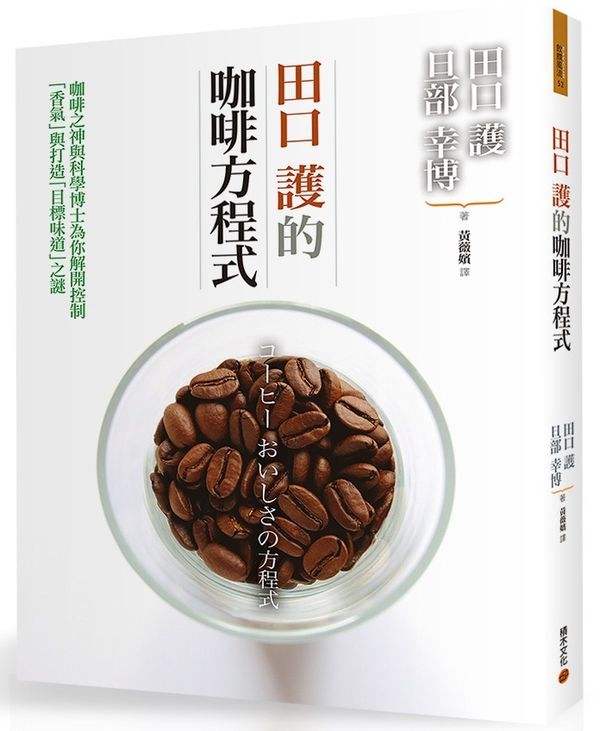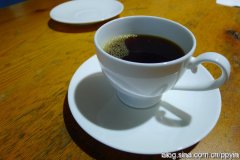Coffee Book recommendation: Taguchi's Coffee equation

Book title: Taguchi's Coffee equation
Author: Yukio Taguchi
Translator: Huang Weiqian
Publishing: building block culture
Way to buy: universal Taobao ~
Mr. Taguchi, coffee lovers should be no strangers, but if you have some in-depth understanding of coffee, the old man's works are basically necessary for the collection, including the Coffee Collection and then the Fine Coffee Collection, which is now the third book in the Daquan series.
Unlike the former ordinary universities, the physique of 16-year-old universities is quite imposing in the hands. The body size of this book is usually close to 32-fold size, paperback, and you can finally grasp it in your hand and find a comfortable position to study it. It is said that the previous hardcover book is very high, but it is suitable for sitting and reading straight. If you occasionally get lazy and want to lie on the sofa and read idle, you must first have excellent arm strength, and the key is the risk of accidentally falling asleep and being hurt by a book.
Now you can finally read o (∩ _ ∩) o freely.
Say the content.
This book is suitable for:
1. TX with a comprehensive understanding of the "from seed to cup" (from crop to cup) of coffee.
2. friends who have practical experience in coffee roasting and extraction.
3. Coffee beginners, if they are confident enough to stop and check materials while reading, there is no big problem with the intellectual content, and the difficulty may lie in the lack of operational experience, and it is difficult to understand some of the content.
Reading Tips:
The main contents are as follows: 1. The extraction part is mainly hand-brewed coffee, rarely involving Italian machines.
2. The content of this book is built on the basis of the first two books, which requires a certain amount of knowledge reserve.
3. No drink formula, no appliance explanation, no introduction of well-known raw bean producing areas.
4. Traditional Chinese, vertical version, from right to left.
Highlights of books:
1. Author
The existing coffee books, put aside the coffee miscellaneous books such as following the trend, and put aside the "biographies" storybooks of "inspirational" style. in terms of coffee knowledge, the authors are basically divided into two categories: one is people in the coffee industry. They fight in the coffee front line, and the things they write are practical, real and available for reference. One is coffee lovers, although they do not directly join the industry, but years of accumulation and learning, can also stimulate the text.
People in the industry are stronger than practice, while scientific theory is a weakness; scholarly cross-border enthusiasts and writers are good at knowledge telling, practical application, and slightly short of operational experience based on hobbies.
There is no need to repeat the background of this new book, Mr. Taguchi. The co-author, Mr. Danbu Xingbo, is a doctor of medicine by profession, and his hobby is coffee. He likes learning coffee with the theoretical analysis ability of the research subject.
Coffee practice + scientific theory, this can be docked.
It seems to be co-authored, but in fact, the content of this book is mainly based on Taguchi-style narration. Mr. Danbu is like a guest commenting on the program, only speaking in some places that need the support of scientific theory.
This kind of cooperation is actually quite good, after all, there are probably not many friends who are keen on studying scientific papers.
2. Content
The frame is clear, three parts, raw beans, baking, extraction, the theme is distinct.
The whole book is written in accordance with the context of "from seed to cup", and describes each link related to the quality of coffee in detail.
With the knowledge popularization of the first two books, compared with the breadth of discussion, the content of this book gives some relatively in-depth and detailed explanations on the details that some practitioners may be concerned about.
1) take the raw bean as an example
When ordinary books talk about exquisite ways, most of them stay in the classification of exquisite ways, and will briefly summarize the pros and cons of several ways in more detail.
In the narration of this book, not only the text introduces in detail the historical origin of various exquisite ways, but also involves the reasons for the emergence of advantages and disadvantages, but also has a number of detailed comparative charts, clear and clear.
2) Baking process
Unlike ordinary books, it is no longer necessary to show the general baking process and basic operations, but by default, readers already have basic baking knowledge, and pen and ink are more used for the analysis of the baking process.
Unlike the Daquan series, the classification of beans in systematic coffee science will be described in detail. But focus on the overall process of raw bean baking to describe the material and taste changes, designed to the specific links, and then combined with the type of raw beans to explain.
In the baking section, a large part of the content emphasizes the importance of "dehydration", which involves the performance of related substances and taste, which is worth reading carefully.
3) extraction seal
As mentioned earlier, the extraction part, mainly hand-brewed coffee, used for comparative analysis is more flannel filtration, but also a little related to the race wind (siphon), French pressure, love pressure, Italian style.
It is believed that the reading nerves of coffee drinkers have been touched by taking out only the three sub-headings of the extraction part, "the relationship between extraction methods and taste and aroma", "the difference of taste and aroma of different extraction tools" and "the difference of temperature".
However, in fact, the author does not reveal any tips, but more about some principles, and even some principles are too ordinary for most coffee learners, such as the effect of grinding degree and water temperature on taste and aroma.
4) Chart
The chart of this book is a major feature.
Unlike previous books, many of the pictures are scenery or coffee-related real-world pictures. The chart of this book takes a lot of effort to read, involving many scientific terms, not counting, but also very challenging the reader's logical analysis ability, in the end, it is the level of the medical doctor.
5) colored eggs
The flavor ring of SCAA is explained in detail. It is full of pictures and texts.
At present, among the existing coffee books and periodicals, it is probably the clearest and most intuitive version.
If you already have the authentic copy, please ignore it.
It is also mentioned that the world atlas of coffee, the Chinese version of the book, will be published in January 2016.
Read the suggestions:
Repeat the reading.
Say the important words three times.
If you want to get to the bottom of this book, I'm afraid it's more than three times.
It is suggested that the pictures and texts should be read separately, as mentioned earlier, most of the charts in this book have a large amount of information, and as soon as they come up, they will be combined with pictures and texts, and so on, the contents of the charts will be sorted out, and where the text is going to be confused.
Students with high IQ, please ignore it. ~
The chart is in line with the explanatory text, and even if it is skimmed temporarily, it will not seriously affect the understanding of the text.
Above.
Important Notice :
前街咖啡 FrontStreet Coffee has moved to new addredd:
FrontStreet Coffee Address: 315,Donghua East Road,GuangZhou
Tel:020 38364473
- Prev

Parsing | Why is the coffee we drink astringent?
Astringent taste, which is bound with persimmons and cucumbers, sometimes unfortunately appears in coffee. Once a good cup of coffee appears astringent taste, that is, white jade is slightly flawed, and this astringent taste can easily become more intense as the temperature of the coffee drops, becoming sour and bitter. Many students, especially those in the junior class, tend to make astringent coffee, even if it is
- Next

Summon the soul of a cup of espresso and drink it through!
We have talked a lot about espresso: its basic composition and classification, what is good espresso, starting from espresso, we also evaluated the chain cafe around you, "5 big-name coffee, 6 cups of high-praise lattes". Drink for you the convenience store coffee "originally it tastes much better than I thought") said so much, but never said so much
Related
- Beginners will see the "Coffee pull flower" guide!
- What is the difference between ice blog purified milk and ordinary milk coffee?
- Why is the Philippines the largest producer of crops in Liberia?
- For coffee extraction, should the fine powder be retained?
- How does extracted espresso fill pressed powder? How much strength does it take to press the powder?
- How to make jasmine cold extract coffee? Is the jasmine + latte good?
- Will this little toy really make the coffee taste better? How does Lily Drip affect coffee extraction?
- Will the action of slapping the filter cup also affect coffee extraction?
- What's the difference between powder-to-water ratio and powder-to-liquid ratio?
- What is the Ethiopian local species? What does it have to do with Heirloom native species?

